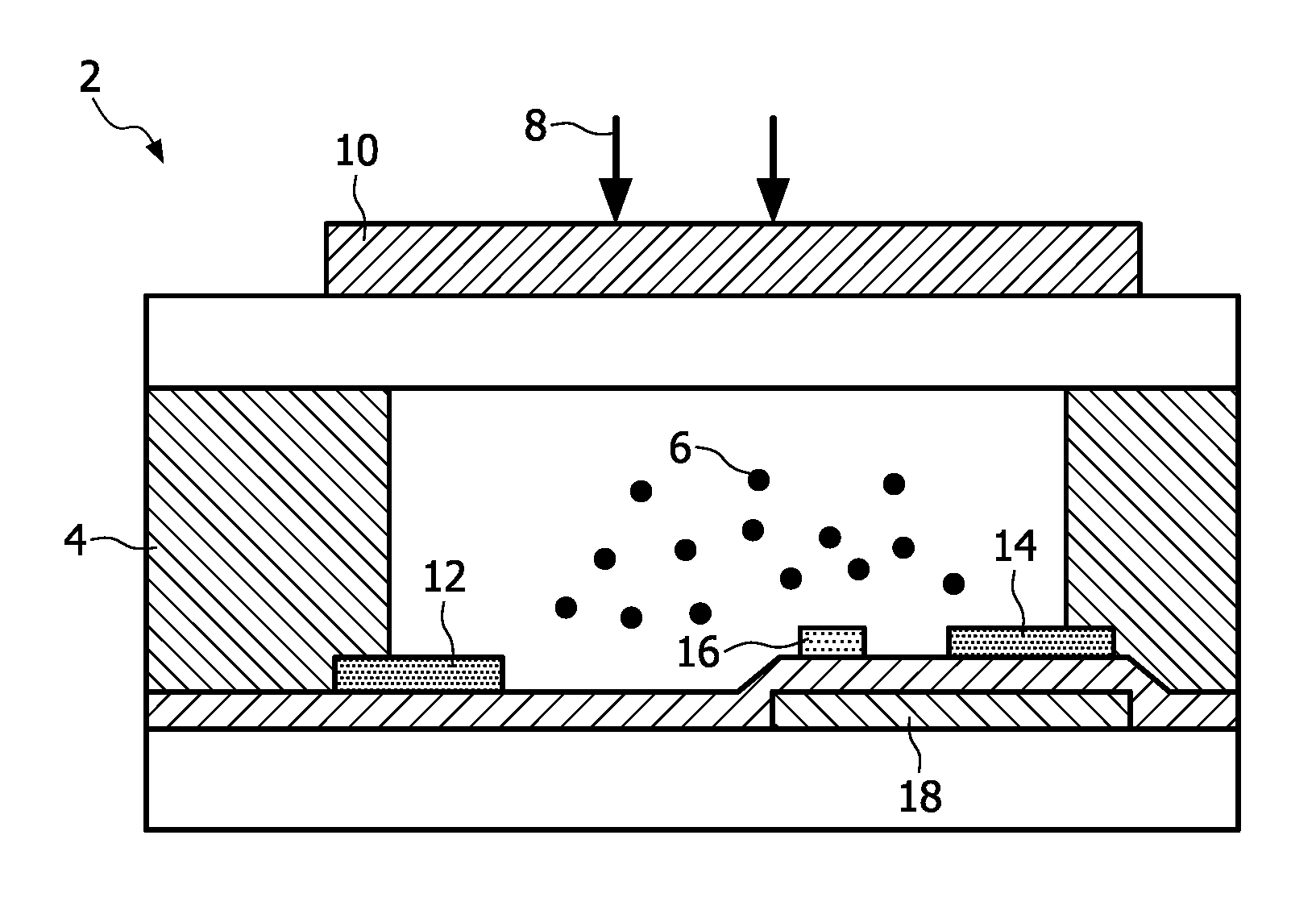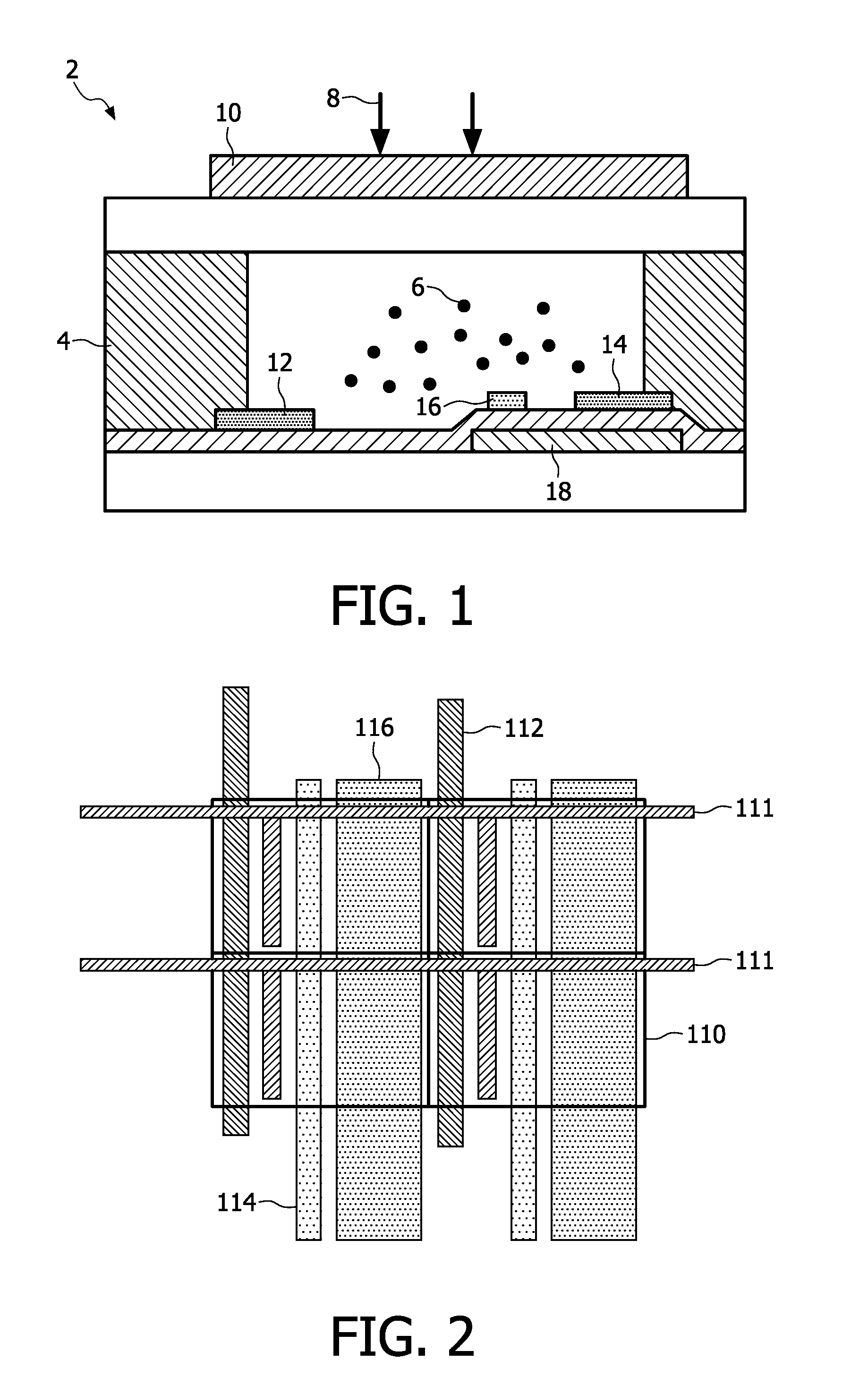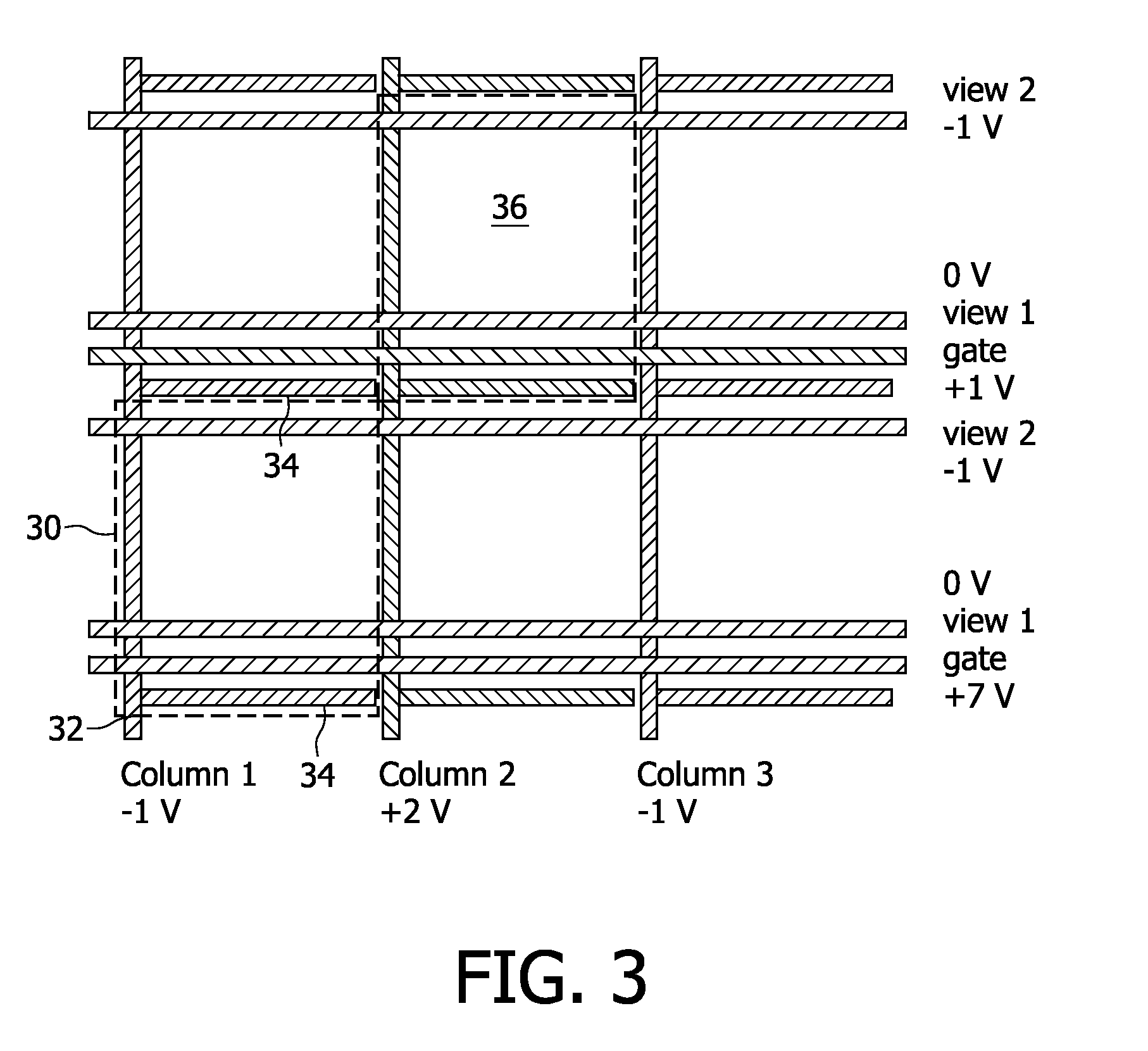Electronic device using movement of particles
- Summary
- Abstract
- Description
- Claims
- Application Information
AI Technical Summary
Benefits of technology
Problems solved by technology
Method used
Image
Examples
first embodiment
[0077]In the invention, rather than applying a stationary potential to the collector electrodes for a select-write pixel or row, the potential at the collector (column) of the select-write pixel or row is modulated with a repetitive cycle as shown in FIG. 5 between a pixel-write and a pixel non-write state.
[0078]FIG. 5 shows the pixel writing phase having time duration t, and this is the time during which there is particle movement to the temporary storage electrode, namely the particle movement shown in the select-write part of FIG. 4. This time period t comprises a series of N pulses on the collector electrode between the write and non-write voltages, namely +10 V and −10 V taking the example voltages in FIG. 4, or +2 V and −1 V taking the example voltages in FIG. 3. For each pulse 50, the duty cycle determines the grey level. This duty cycle corresponds to the duty cycle for the full period of time (t) and determines the grey-level. Thus, different grey-levels (for example 255 fo...
second embodiment
[0091]In a second embodiment, instead of resetting the pigments to the collector electrode, the pigments can be reset to the first display electrode (view1), namely the display electrode nearest to the gate electrode. Pigments can then be extracted in small and controlled packets towards the collector electrode by using the modulation scheme described above applied to either the collector, or the view1 electrode.
[0092]In the latter case, for the non-write pixels the collector potential is repelling, whilst for the pixel-select pixel-write case the collector potential is attracting. Thus after removal of the desired amount of pigment, the display common evolution phase again follows as described above.
[0093]In a third embodiment, rather than having a constant addressing period per pixel and a variable duty-cycle, a fixed duty-cycle can be applied for a variable amount of time whilst applying different potentials, or signs, to the collector electrodes, thereby again resulting in well ...
fourth embodiment
[0094]In a fourth embodiment, both the duty-cycle and the addressing time per pixel are variable, and different combinations of drive scheme can be applied at different times.
PUM
 Login to View More
Login to View More Abstract
Description
Claims
Application Information
 Login to View More
Login to View More - R&D
- Intellectual Property
- Life Sciences
- Materials
- Tech Scout
- Unparalleled Data Quality
- Higher Quality Content
- 60% Fewer Hallucinations
Browse by: Latest US Patents, China's latest patents, Technical Efficacy Thesaurus, Application Domain, Technology Topic, Popular Technical Reports.
© 2025 PatSnap. All rights reserved.Legal|Privacy policy|Modern Slavery Act Transparency Statement|Sitemap|About US| Contact US: help@patsnap.com



